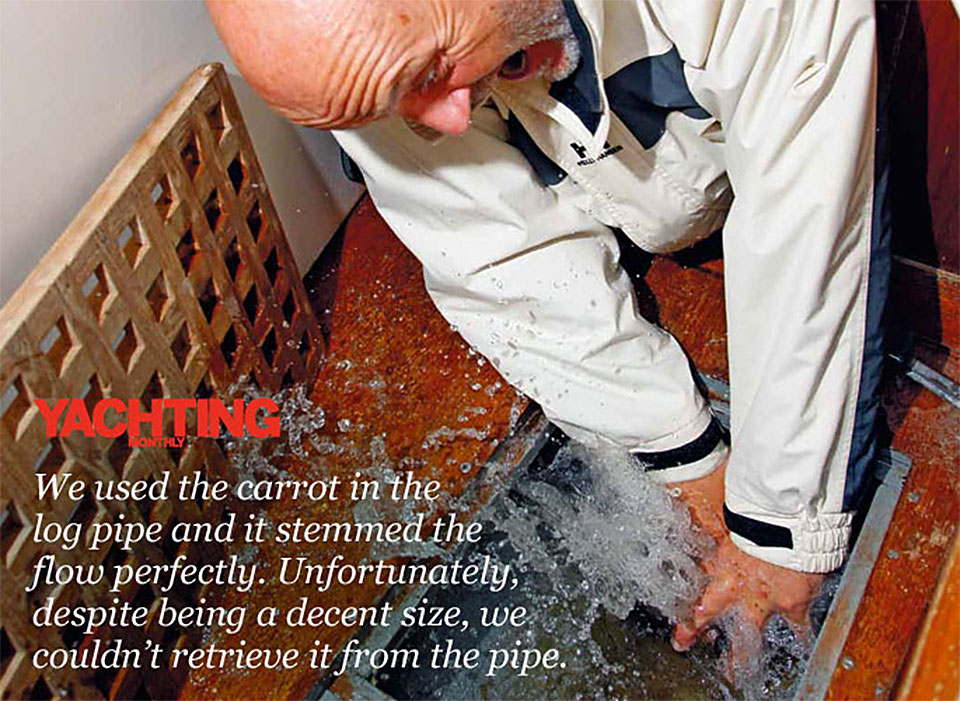In association with Admiral Boat Insurance, Yachting Monthly created a series of potential disasters to find out if all the theories of how to deal with such situations actually work in practice. The boat used in the crash test is Admiral’s own 1982 Jeanneau Sun Fizz ketch, Fizzical.

What happens when your boat through hull fittings fail and you start Sinking? Whether it’s a seacock or a log transducer that fails what can you use to stop the boat leak? The Yachting Monthly team decided to find out what works and what doesn’t.
Holes below the waterline are essential for plumbing, propulsion and engine cooling systems but intuitively they are not a good idea. There are three common ways a boat seacock can fail. A corroded pipe can shear at the boat hull, leaving nothing more than a hole. A ball value can crack leaving just the through hull fitting. Or finally the hose slips off the tail pipe inboard of the ball value but the ball valve is jammed and can’t be closed.
The best ways the team suggested to fix them included a softwood bung, a Forespar TruPlug (which looks a bit like a traffic cone), or a playdough-type mouldable polymer, called Stay Afloat which is possibly best because it can mould into any shape that the hole happens to be. More imaginative solutions included a towel, and a carrot or potato! Whatever is to hand the quickest is often the best to use initially! Lessons learnt include the proper maintenance and checking of the boat seacocks, and using a bit of team work to get someone to man the bilge pumps as soon as water appears while checking all the boat seacocks starting with the largest to see which has failed.
Boat Leaking Video from Yachting Monthly Boat Crash Test
Robert Holbrook, MD Admiral Marine
 “Often, the first natural human instinct when an emergency or disaster strikes is panic. In a series of controlled experiments, the Yachting Monthly crew put theory to the test by re-enacting some typical worst-case scenario sailing accidents or emergencies – such as grounding, capsize and mast failure. Risk assessment and careful consultation with experts was at the core of all tests. How often are incidents like this photographed and filmed in detail? By sharing their findings in a series of articles, I could see how yachtsmen could learn much invaluable information. Why not learn from our mistakes by following her story so you can avoid making your own?”
“Often, the first natural human instinct when an emergency or disaster strikes is panic. In a series of controlled experiments, the Yachting Monthly crew put theory to the test by re-enacting some typical worst-case scenario sailing accidents or emergencies – such as grounding, capsize and mast failure. Risk assessment and careful consultation with experts was at the core of all tests. How often are incidents like this photographed and filmed in detail? By sharing their findings in a series of articles, I could see how yachtsmen could learn much invaluable information. Why not learn from our mistakes by following her story so you can avoid making your own?”



